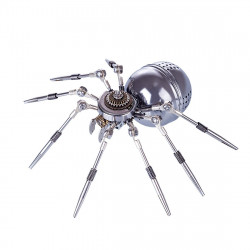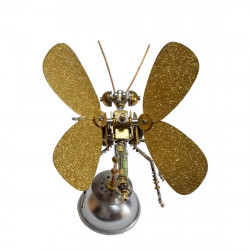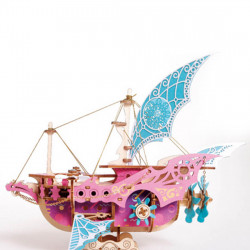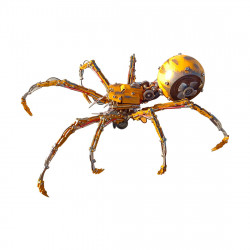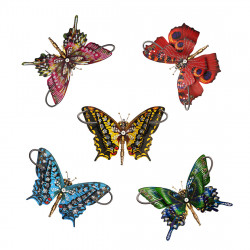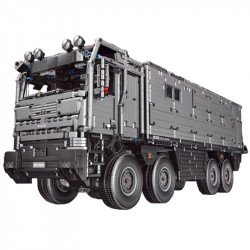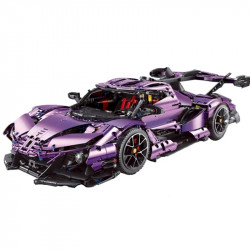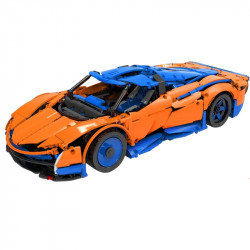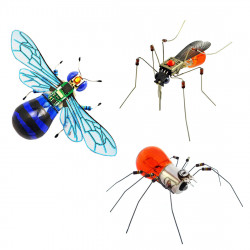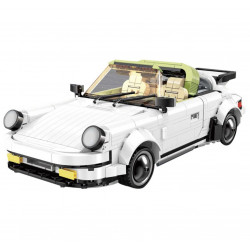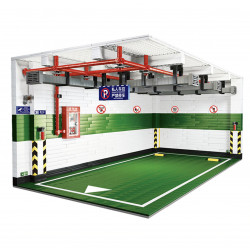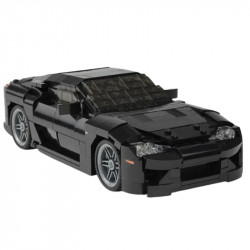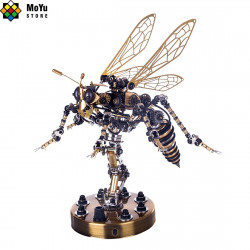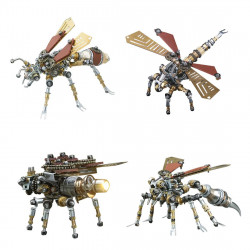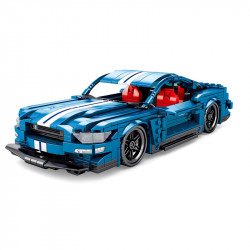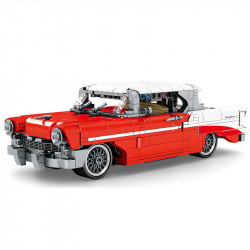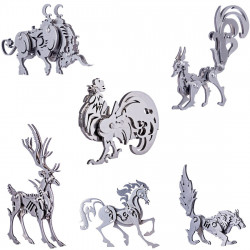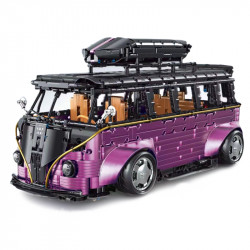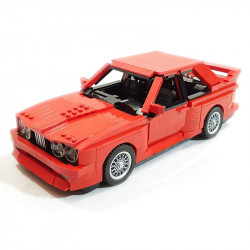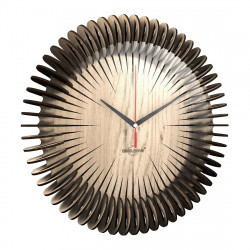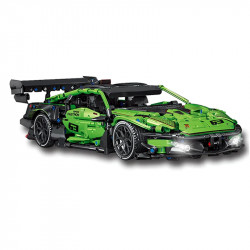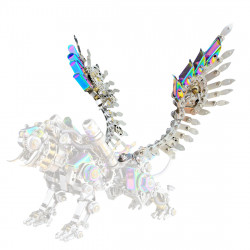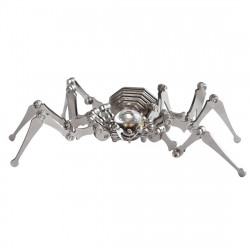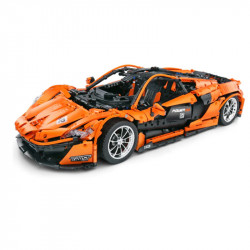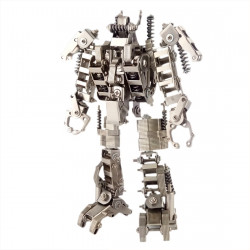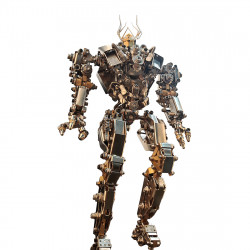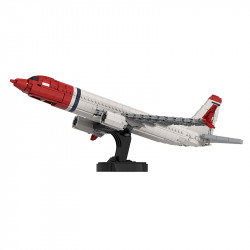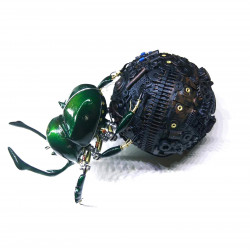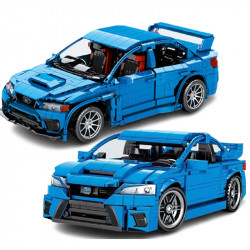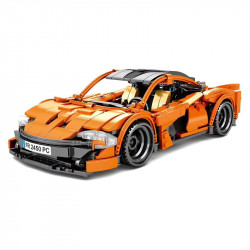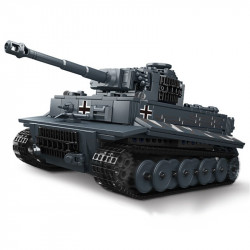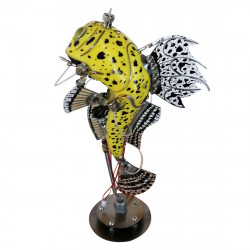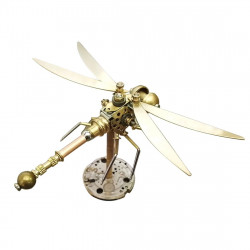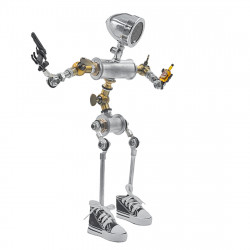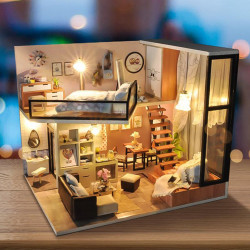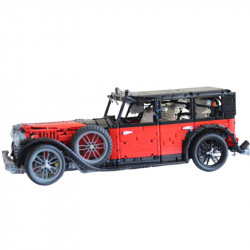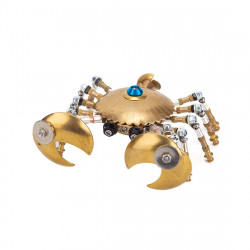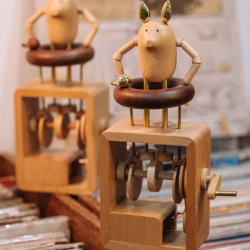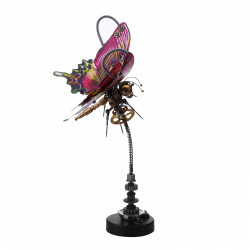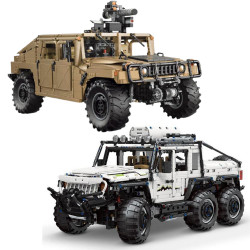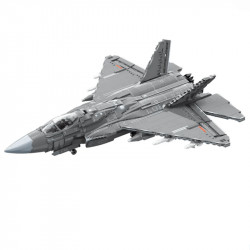Build: Applejack and Rainbow Dash

Build: Applejack and Rainbow Dash
What do you know? I simply don't give a damn. I am a man, yes. Yes, I am loud, huge, and hairy. However, the new My Little Pony series is good. I'm not a Bronie anymore. That's one of the shows I don't mind watching when my children are watching it. Therefore, I have no problem creating some MLP models. I won't apologize for it either.
This time, I chose to let my two elder children choose one of the six models that I would be building. My son selected Applejack, while my daughter selected Rainbow Dash. I let my daughter choose first, even though he most likely would have selected Rainbow Dash. Thus, those are the two that I have constructed this time. For now, this is what I've done, but I'll likely build the other four in pairs later. I will never again make and review six models at once. Not at all.
I enjoy the way these models look. It's probably not as clear to others as it is to me, but I had some difficulty getting all the edges oriented correctly. The vibrant colors and dynamic poses appeal to me. Additionally, the hair did a terrific job with the hair, to be honest. It has a lot of flow. And now that I've constructed a number of Legends models, I don't even hate the squared-off corners; in a sense, they've evolved into their aesthetic. I don't particularly care about fingerprints on models, in case you couldn't tell. It occurs. And these models show it clearly.
Speaking of Legends, these models were first introduced back in the day. I questioned why they didn't simply refer to them as Legends models. After all, that's how they appear. Instead of having two legs and two arms, it has four legs. Now that I've created them, though, I can see why. It broke out of the target difficulty audience that the Legends line was targeting because it is much more curved and just a bit more challenging. That's not to suggest they were tough; instead, they call on a few more sophisticated abilities than the classic line, particularly the capacity to follow curves that vary in degree and direction.
I do want to draw attention to one element that I felt was missing from both sets of instructions before I go into any particulars regarding each of these builds separately. As you approach the end of the build, it becomes very clear, but the instructions never mention it (as far as I can tell). You must slightly bend each leg out where it joins the body when you have finished creating it. I tried to make the bottoms of the hooves about perpendicular to the sides of the body while seeming end-on. The ponies will be standing on their... tippie-hooves, otherwise?
Another typical observation is that the "dynamic" positions, which include raising one leg, have drawbacks. Don't get me wrong, it looks good. However, it also causes some balancing problems, particularly for Applejack, who wears both the ponytail and the enormous hat. She frequently teetered on her three legs, and Rainbow Dash needed little persuasion to topple herself. My answer was to wedge a small portion of the scrap sheet—which was left over after the components were clipped out—into the back left leg. Essentially giving that side a bit more counterbalance.
My final piece of general advice is that the easiest way to make these curves is to get them close to the section they will attach to and try to match it gently. An additional recommendation is to use a vast object to round the sections slightly at first, simply a general smooshing in the direction of the final shape, which may be a sizeable C-shaped curve or an S-curve. To begin shaping, find a battery, marker, or other tool. This will help to "break in" the curve etchings and make it easier to mold them into the desired final shape.
The main focus of Rainbow Dash's build is that enormous swath of hair on top of her head, but the rest of her body is pretty simple. Make sure to monitor parts 11 and 12 while working on the uppermost sections. Don't confuse the two. Fortunately, that helps a little because the middle tab on top is off-center. Additionally, be sure to adhere to the call-out directions when it comes time to place component 27 on the back of her head. There isn't much room for play, so wait until the head has been linked to the body. This is a fascinating exercise in and of itself. Additionally, if you fold down her wings a lot, it may be much easier to align and connect component 27. You can always fold them back up afterward if you're careful.
My main challenges with Applejack were her tail-tail (not to be mistaken with her ponytail) and the hat. I had a lot of trouble keeping track of and figuring out which slots to utilize when attaching objects to that hat, not because I was trying to shape and mold it. The fact that some of the steps depict the attachment's slots being totally hidden by other components does not assist with this. In addition, there appear to be far too many slots in the first place. Getting the narrow strip to follow the right path at the end, where the band is, was my biggest challenge with the tail. That's a compact region with some tight turns and corners. Although I'm not totally happy with my performance, I'm also not overly dissatisfied. But it isn't easy.
Despite being a post for two constructions, it is no surprise that this one is a little shorter than my last one. But let me tell you, after all the labor that went into creating the Terminator model (and putting up that absurdly lengthy post), it's good to have a quiet, low-key construction or two. It took me less than an hour to finish Rainbow Dash and slightly more than an hour to finish Applejack.
